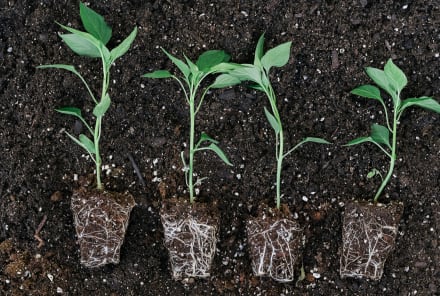Advertisement
Wildfire Smoke Has Its Own Microbiome & 4 Other Crazy Climate-Health Connections


Turns out, wildfire smoke has its own microbiome.
In the last few years, research interest has picked up in a new field called pyroaerobiology. The study of fire (pyro-) meets air (aero-), it looks into all the microbes that wildfires can pick up in their flames and distribute in their smoke. One study published this month demonstrated just how many bacteria and fungi can go into the atmosphere after a fire event and how far it can travel. Moving forward, researchers will look into any potential health risks that could be veiled in wildfire's microbiome. (Read the research here1.)
Climate change is stressing us out — and therapists are taking note.
The American Psychological Association just came out with its list of 14 emerging trends for the year ahead—and climate anxiety made the cut.
The list comes after APA member Susan Clayton, Ph.D., polled 10,000 young people (ages 16 to 25) and found that 60% of them were "extremely" or "very" worried about climate change, and almost 40% of them were so worried that they were hesitant to have children. This troubling statistic led the association to declare that psychologists have a clear role to play in helping us through this distressing time. "People need to collectively change not only individual behavior but also the infrastructure, policies, and systems of everyday life," Christie Manning, Ph.D., of Macalester College said in the APA trend report. "This will require all of us to fundamentally think differently about our place in the world and our connections to each other." (Read the climate trend here and the full list here.)
Access to green space is associated with a lower risk of type 2 diabetes.
After studying a database of 5,574 people, a University of Washington Seattle team noted that living within 1,000 meters (a bit over half a mile) of green space, like a park or forest, was associated with a lower risk of type 2 diabetes. There are many potential reasons for this: Green space can promote exercise, and it's more often found in wealthier communities that also have access to more nutritious food and higher-quality health care. But after adjusting for some of these factors, the researchers still concluded that "neighborhood green space is modestly protective against diabetes, indicating that neighborhood-level planning that supports healthy behaviors and lifestyles may aid in diabetes prevention." (Read the research here.)
We now have an idea about how many lives can be saved with stricter air pollution standards.
We've long known that our air pollution standards in the U.S. are inadequate—and a sprawling new study on 68.5 million older U.S. adults shows just how much. After reviewing data from 2000 to 2016, the Health Effects Institute found that lowering the acceptable levels of pollutants like fine particulate matter (PM2.5) and nitrous oxide could prevent as many as 143,000 deaths a decade among this older cohort, the New York Times reports. Some of the major sources of these pollutants are coal power plants, fossil fuel plants, and automobile exhaust. (Read the research here.)
...And if that weren't reason enough to clean up our act, consider the semen.
Older people aren't the only ones threatened by air pollution. New research in the journal Environmental Health found that exposure to fine particulate matter negatively affected fertile men's semen according to 14 markers of quality. Yikes. (Read the research here.)
Monthly focus: Resolutions.
Reading headlines like these can be daunting, but we know that taking action is one way to fend off climate distress. So, what commitments will you make in 2022?
To home in on your area of impact, consider this Venn diagram practice from Ayana Elizabeth Johnson, Ph.D. Johnson calls on us to make three lists: what brings us joy, what we're good at, and what climate work we feel is most urgent. Where those lists meet is where you'll find an impactful eco-resolution that's perfectly suited to your skill set and passions.
Maybe you're a photographer who vows to do a series on the plastic pollution crisis or an entrepreneur who commits to reducing your company's carbon footprint. The more aligned we feel with our goals, the more likely we'll be to stick with them in the long run.
These resources are here to help:
Like all New Year's resolutions, your climate pact will benefit from some accountability. Recruit a friend to join you and hold monthly Zooms to check in on how it's going; track your progress through apps that measure your carbon footprint like Capture; and/or add some financial incentives through charge cards like Future, which gives you 5% cashback for "climate-smart" spending like taking public transportation, shopping secondhand, and buying plant-based food.
Consider what kinds of systems have helped you achieve other goals in your life, and apply those to this new focus area: personal, powerful climate action that you commit to long past January.











